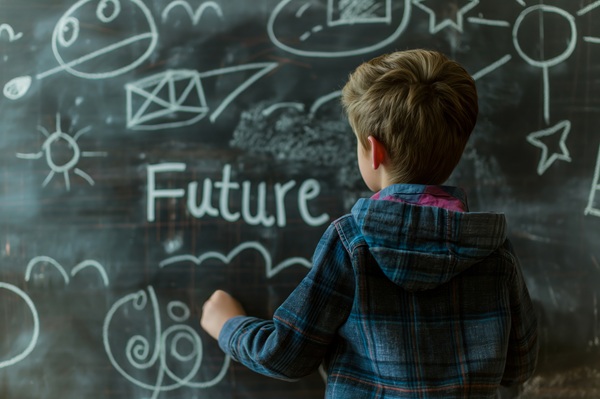Are learners prepared for the future?

Indigenous traditions often value multi-generational thinking where today’s decisions should result in a sustainable world several generations into the future. Schools are well placed to practice this kind of futures thinking because young people are naturally future-oriented. Much of their thinking is centred on future events and future developments that matter to them personally but also in a bigger way.
The European sustainability competence framework GreenComp specifies ‘envisioning sustainable futures’ as a distinct competence area. It requires learners to understand the future as open and something that can be shaped collectively. Rather than thinking about certainties, futures literacy encourages learners to think about possibilities.
Key terms for envisioning sustainable futures according to GreenComp include creativity, experimentation, novel ideas and methods, uncertainty, risk and alternatives. This differs from teaching and learning well-established facts and certain knowledge but is no less important. To achieve this, pedagogies need to allow and foster creativity, flexibility, and space and time for exploration, including the opportunity to fail. Teachers and learners also need to be able to tap into different disciplines and receive and share information and input across subjects.
Despite its importance, schools struggle to apply futures-oriented teaching. A recent Eurydice report found that compared with other GreenComp competences futures-thinking is the least present competence in top-level curricula across Europe. Education is often centred around past events and established facts which is crucial in order to act responsibly in the present and draw conclusions for the future.
Without a doubt, actively embedding futures thinking into teaching and learning needs more support and innovative examples, such as the Horizon2020 project FEDORA. It has developed a future-oriented model for science education to enable creative thinking, foresight and active hope.
Similarly, the Erasmus+ Teacher Academy EduSTA (Academy for Sustainable Future Educators) is developing materials and short courses, including Digital Open Badges.
The Future Forward online lessons, developed by the European Commission’s Joint Research Centre together with TED-Ed, are a good entry into futures thinking. They help clarify concepts such as perception of time, futures mindset, multiple futures and taking action.
Additional information
-
Education type:School Education
-
Target audience:TeacherStudent TeacherHead Teacher / PrincipalTeacher EducatorGovernment staff / policy maker
-
Target audience ISCED:Primary education (ISCED 1)Lower secondary education (ISCED 2)Upper secondary education (ISCED 3)
